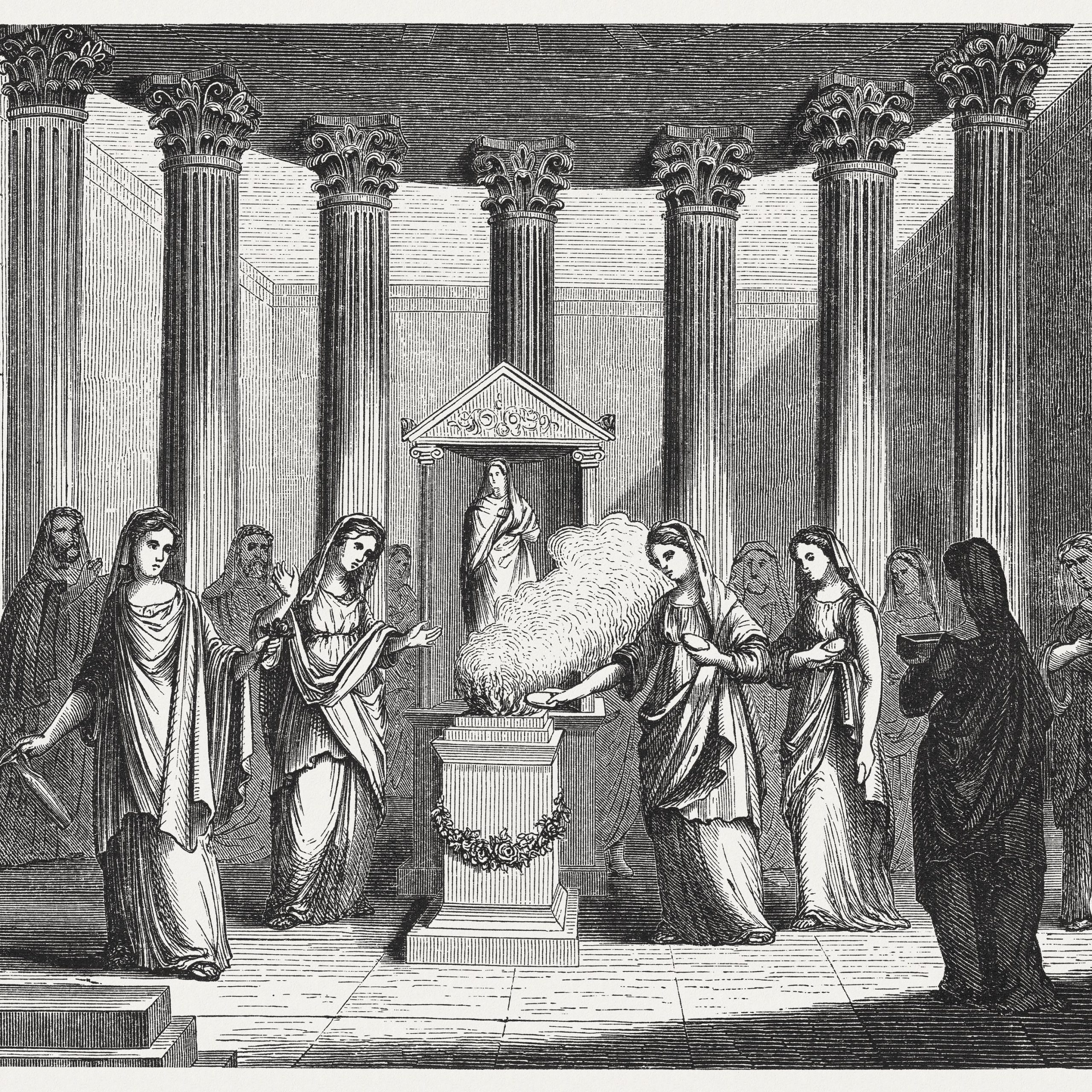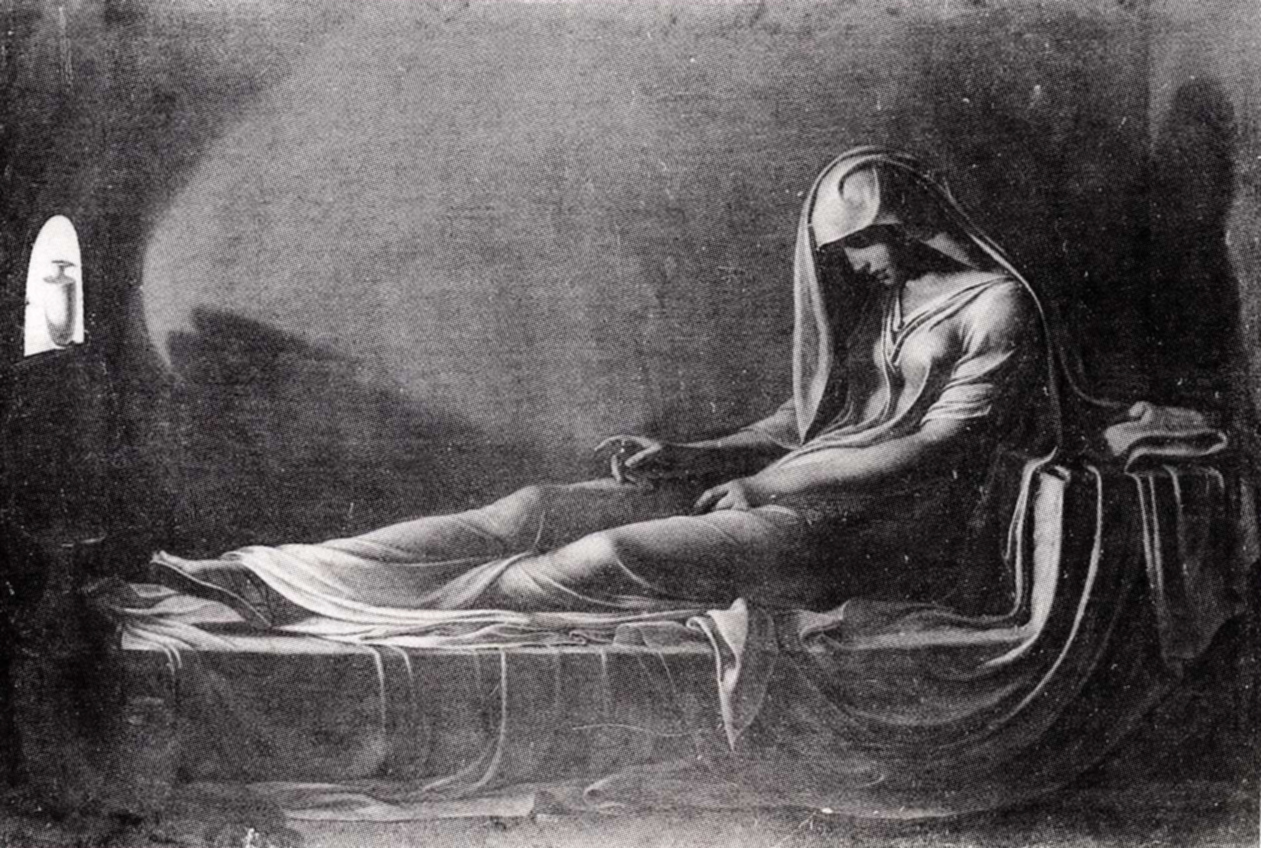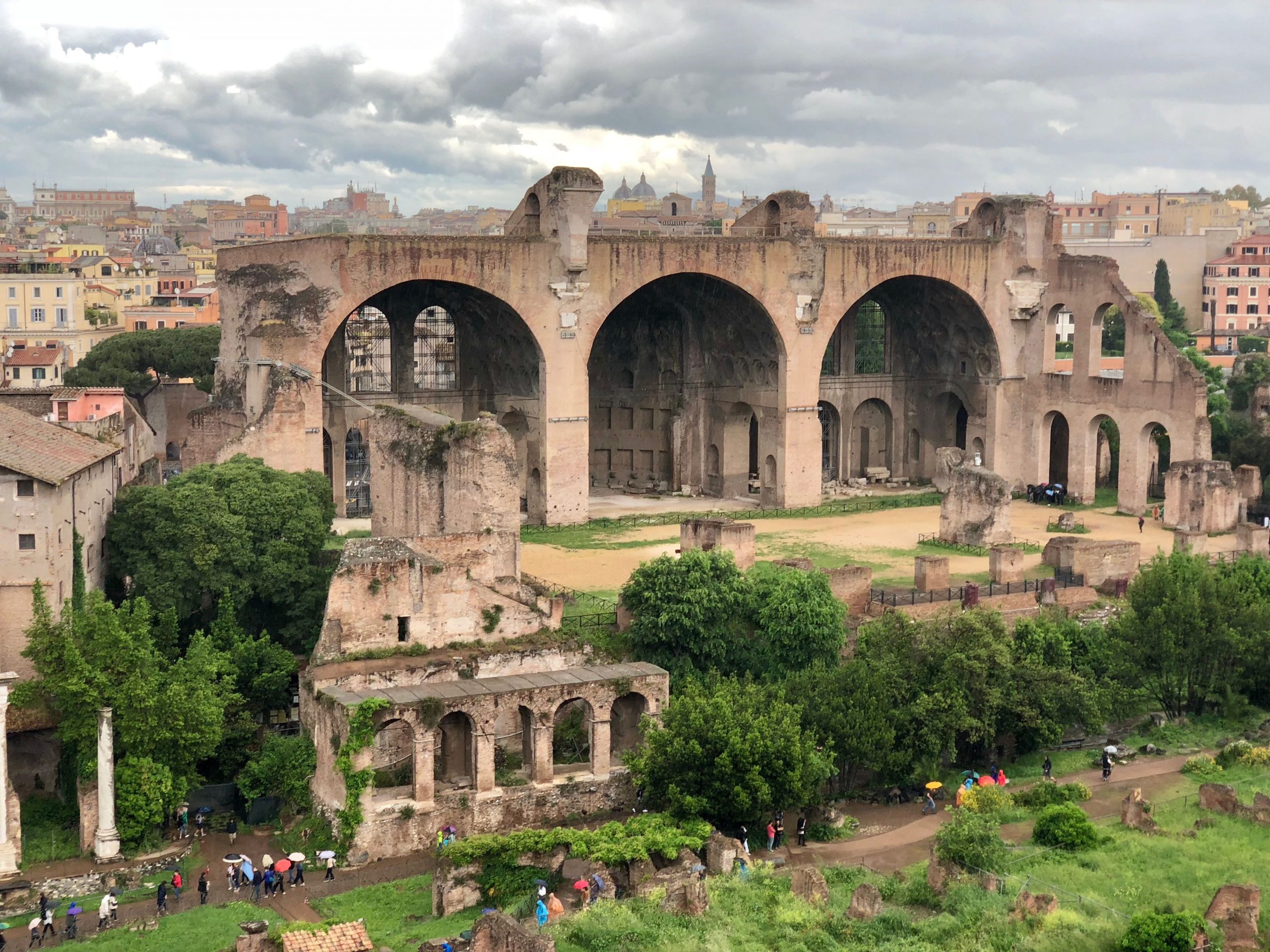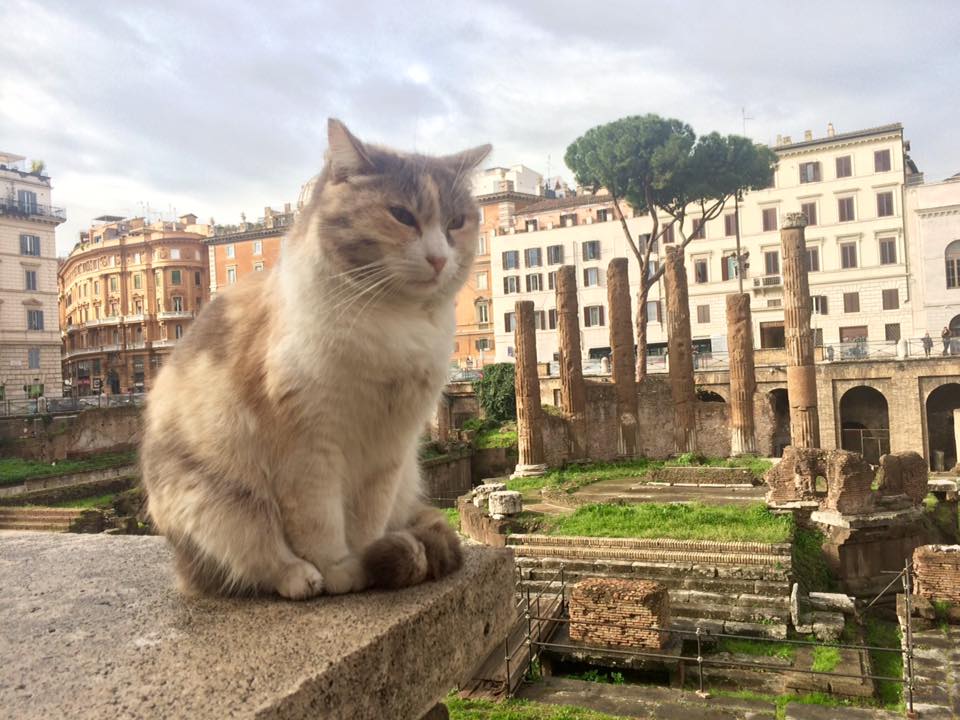Temple of Vesta & The Vestal Virgins
The Temple of Vesta was one of the oldest temples on the forum. Little remains of the small round temple, what we see today was rebuilt in the early 20th Century, the only surviving image we have of it is on coins and a sculptural relief in Florence.

House of the Vestals
the House of the Vestal Virgins which is a lovely spot on the forum to visit. It was a closed apartment block with three apartments on each side, surrounded by a covered portico with marble columns. At one end a large space perhaps communal quarters and at the other end a small bathing complex. In all there are six apartments with two levels, rebuilt by Nero after the fire of 64AD, the Vestals lived in luxury at the centre of the Forum.
HISTORY OF VESTA
Vesta was the virgin goddess of the hearth, home, and family in Roman religion and one of the oldest religious institutions of Rome.According to Roman legend Rhea Silvia the mother of Romulus and Remus was a vestal Virgin. Her worship seems to have come from Alba Longa where the twins originated (originally a settlement of Aeneas after his escape from the Trojan war). Legend had it that Aeneas brought a sacred flame from Troy. She was rarely portrayed as a goddess but as a flame, representing the hearth of the home which sustained and protected the family.
In the ancient world, fire was not readily available and so the presence of constantly burning hearth was a necessity in both private and public spaces. The sacred flame was kept in the Temple of Vesta, looked after by the Vestal Virgins – sacred priestesses that dedicated themselves to maintaining her flame. It was believed if the sacred flame of Vesta went out that the city of Rome would fall, therefore the Temple and the Vestal virgins were of vital importance to Rome.
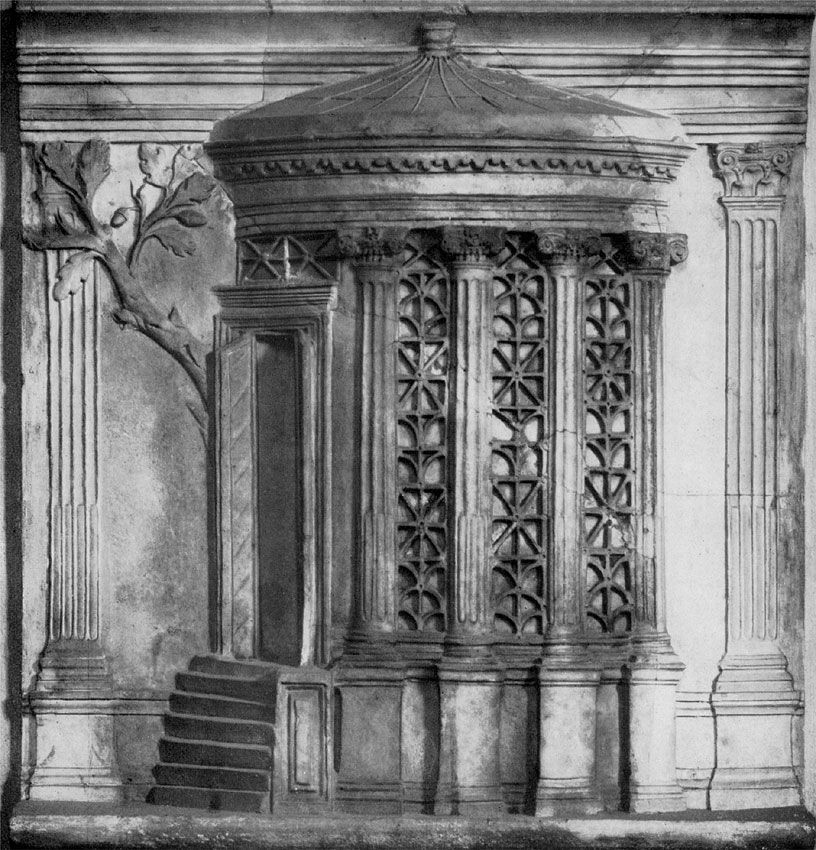
THE VESTAL VIRGINS
In order to care for the flame, the sacred priestesses had to remain pure and so were required to swear a vow of chastity. There were six vestal virgins, chosen between the ages of 6 and 10 by the chief priest, or pontifex maximus, later by the emperor. The Vestals served the cult of Vesta for 30 years after which, in theory, they could marry although many chose not to.
There were strict criteria for the selection of a priestess of Vesta, they must be from a family of good-standing with Roman parents, both still living. The girls were inspected for any imperfections like speech impediments or physical disabilities. Once the Vestals left their family home, they were no longer associated with their family; their fathers had no authority above them; they answered only to the high priest. As their role befitted them, they had to maintain their chastity and were severely dressed wearing the stola, a sack like garment over a tunic worn by Roman matrons. The Vestal hairstyle, the sex crines (six- tressed hairstyle) was otherwise worn only by brides on their wedding day
The main duties of a vestal virgin, were to ensure the fire burned constantly, to clean and sweep the temple and to bake salt cakes which were used in rituals and at sacrifices; they also looked after important sacred items and documents (like the emperor’s will).
VESTAL BENEFITS
Being a Vestal virgin was the highest honour a woman in Rome could achieve and in return for their long service and chastity there were a number of perks: They lived in a luxurious complex in the Roman Forum and could be extremely wealthy. Although they could not inherit their family’s wealth, they received a yearly stipendium (pay) at public expense as well as bequests from family members and wealthy patrons. Literary and epigraphic evidence indicates that individual Vestals owned slaves and property. On many occasions these ‘gifts’ were necessary to convince families to offer candidates. Augustus granted the Vestals the supreme honour as the only women to sit right at the front of the theatre and gladiatorial contests. They had the privilege of sacrosanctitas (sacrosanctity) – protection from physical harm. A lictor – like a private bodyguard went before them in public spaces and on festival days they could travel in a closed carriage.
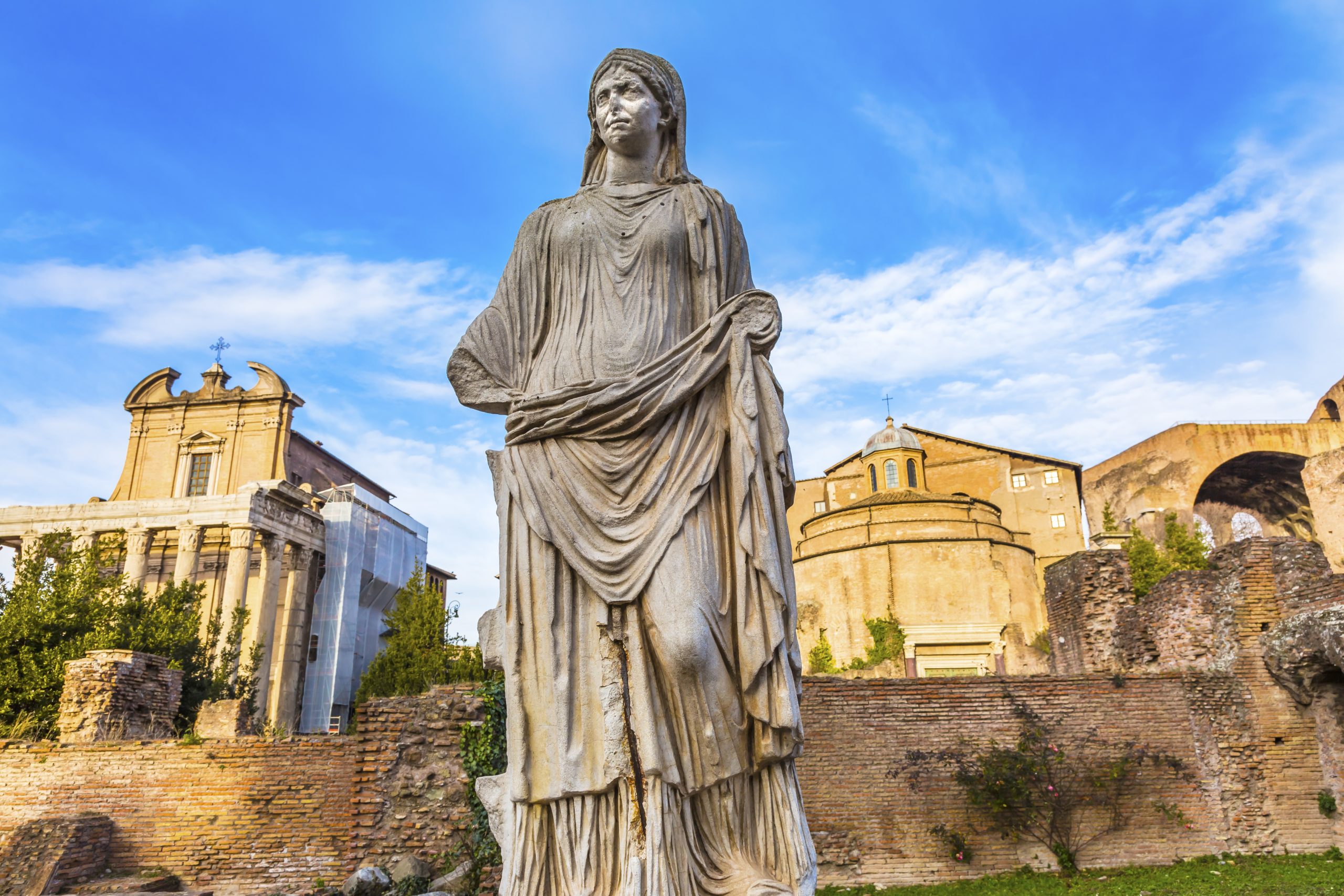
A GRISLY END
Because their role was so important to the city, if the Vestals were found to be incestum (unchaste) they were buried alive. The pontifices placed her in a litter and carried her through the city in a solemn procession resembling a funeral. Because the vestals were sacred to the goddess, they were technically tied to the city boundary or pomerium and so were placed in an underground chamber that had been dug below or perhaps within the walls of the city. When the procession reached the Colline Gate, the pontifex maximus and the other priests averted their gaze as the Vestal descended into a chamber with a bed, a burning lamp, and small portions of bread, water, milk, and oil. These provisions absolved the priests of the Vestal’s death by placing her fate in the hands of Vesta. Once she had disappeared from view, the ladder was pulled up and the entrance sealed with earth.
Although Vesta had been worshipped since the early days of Rome, with Christianity the cult of Vesta died out and was finally banned by Theodosius I in 394 AD, along with other non-Christian cults.
